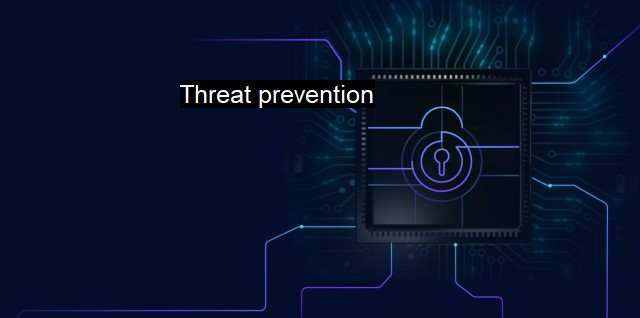What is Threat prevention?
Exploring Effective Threat Prevention Strategies: Safeguarding Computer Networks and Sensitive Data from Emerging Cybersecurity Threats
Threat prevention, within the realm of
cybersecurity and
antivirus software, refers to a set of measures designed to protect a computer network from
security breaches. In the age of expanding technological frontiers, the necessity for stringent
threat prevention strategies has become an absolute requirement for the integrity of individual, corporate, and government computer systems.
One of the most significant components of threat prevention is defense against malware. Malware, short for
malicious software, covers a broad spectrum of threats such as spyware, ransomware,
viruses, and trojans. The role of an antivirus is strategically crucial in safeguarding computer systems and serves as the cornerstone of threat prevention. Antivirus software comprises sophisticated algorithms that constantly scan, identify, and nullify the harmful effects of malware, thus providing a safety buffer against potential attacks.
Threat prevention focuses on eradicating vulnerabilities that could easily be exploited. These weak spots in a system’s defense could be the result of outdated software, poorly configured network protocols, or
weak passwords. Threat prevention enforces regular
software updates, configuration reviews, and encourages the application of strong, complex, and unique passwords.
Firewalls are instrumental to threat prevention in both cybersecurity and
antivirus settings. Firewalls control and monitor net traffic to a network or a specific device. This permits legitimate data reception while
blocking anything potentially harmful. In this way, firewalls act as a different layer of safety that ensures a system's defenses stay uncompromised.
Threat prevention also encompasses
behavior monitoring which involves tracking the patterns of system use. Behavior monitoring helps detect anomalies that could indicate a security breach. For instance, a sudden spike in standard network traffic or
high CPU usage could indicate a
DDoS attack or a computing system infected with a virus or malware, respectively.
One of the increasingly essential aspects of threat prevention is implementing
intrusion detection and prevention systems (IDPS). These systems monitor network traffic with the purpose of identifying malicious activity. They are not only capable of detecting invasive actions but also have the capacity to prevent them within microseconds of detection, thereby retaining the operational continuity of the system while minimizing the effect of the attack.
Education and awareness are pivotal to threat prevention within the sphere of cybersecurity and antivirus software. This involves educating users, staff, and team members about the kinds of
cyber threats they could face. A majority of cyber threats prey on user-based weaknesses such as clicking on
suspicious links or downloading malicious content. Therefore, an educated user base contributes significantly to a closed-source system less vulnerable to cyber threats.
Though threat prevention detects and eliminates most threats, it also devises a plan to handle situations when the system’s defense gets breached, crafting what is often referred to as an Incident Response (IR) plan. An IR plan contains instructions about dealing with incidents, mitigating the risks, and efficiently recovering the system or network's normal function.
Data encryption is part of threat prevention. Cybersecurity and antivirus platforms employ encryption methods to encode data. This turns readable, straightforward information into encoded data which can only be turned back to its original form using an
encryption key, thus adding an extra level of security.
Threat prevention is dynamic, constantly changing in response to the varied and complex nature of cyber threats. Cybersecurity and antivirus tools must revamp and improve regularly. while it revolves around technological tools and programs primarily, its effectiveness equally depends on the well-informed and aware users and employees who form the first line of defense against any potential cyber threats. IEEE-summary>*

